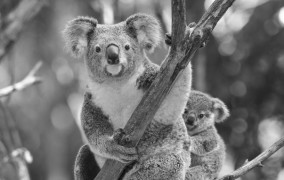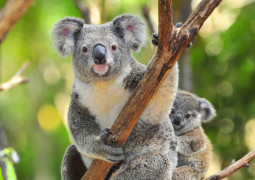Photos today can be easily edited by means of resizing, cropping, adjusting the contrast, or changing an image’s format. As a result, new images are created that are similar to the original ones. Websites, web applications and mobile apps that allow user generated content uploads can benefit from identifying similar images.
If your site allows users to upload images, they can also upload various processed or transformed versions of the same image. As described above, while the versions are not exactly identical, they are quite similar.
Obviously, it’s good practice to show several different images on a single page and avoid displaying similar images. For example, travel sites might want to show different images of a hotel room, but avoid having similar images of the room on the same page.
Additionally, if your web application deals with many uploaded images, you may want to be able to automatically recognize if newly uploaded images are similar to previously uploaded images. Recognizing similar images can prevent duplicate images from being used once they are uploaded, allowing you to better organize your site’s content. The better your web application is better at identifying similar images upon upload, the more duplicated images will no longer be a thing.
Duplicated images will no longer be a thing because similar images upon upload will be identified
Cloudinary uses perceptual hash (pHash), which acts as an image fingerprint. This mathematical algorithm analyzes an image’s content and represents it using a 64-bit number fingerprint. Two images’ pHash values are “close” to one another if the images’ content features are similar. By comparing two image fingerprints, you can tell if they are similar.
You can request the pHash value of an image from Cloudinary for any uploaded image, either using Cloudinary’s upload API, or for any previously uploaded image in your media library using our admin API. You can simply set the phash parameter to true, which produces the image’s pHash value. This image similarity algorithm is incredibly powerful and easy to use. Check out the example below:
Using the following image for example:

Below is a code sample in Ruby that shows how to upload this image with a request for the pHash value:
Cloudinary::Uploader.upload("koala1.jpg", :public_id => "koala1", :phash => true)
Code language: JavaScript (javascript)The result below shows the returned response with the calculated pHash value:
{
"public_id": "koala1",
"version": 1424266415,
"width": 887,
"height": 562,
"format": "jpg",
"etag": "6f821ea4478af3e3a183721c0755cb1b",
...
"phash": "ba19c8ab5fa05a59"
}
Code language: JavaScript (javascript)The examples below demonstrate multiple similar images and their pHash values. Let’s compare the pHash values and find the distance between each pair. If you XOR two of the pHash values and count the “1’s” in the result, you get a value between 0-64. The lower the value, the more similar the images are. If all 64 bits are the same, the photos are very similar.
The similarity score of the examples below expresses how each image is similar to the original image. The score is calculated as 1 - (phash_distance(phash1, phash2) / 64.0) in order to give a result between 0.5 and 1 (phash_distance can be computed using bit_count(phash1 ^ phash2) in MySQL for example).
 887×562 JPEG, 180 KB
887×562 JPEG, 180 KB
pHash: ba19c8ab5fa05a59
 887×562 JPEG, 149 KB
887×562 JPEG, 149 KB
Difference: grayscale.
pHash: ba19caab5f205a59
Similarity score: 0.96875
 797×562 JPEG, 179 KB
797×562 JPEG, 179 KB
Difference: cropped, increased color saturation.
pHash: ba3dcfabbc004a49
Similarity score: 0.78125
 887×509 JPEG, 30.6 KB
887×509 JPEG, 30.6 KB
Difference: cropped, lower JPEG quality.
pHash: 1b39ccea7d304a59
Similarity score: 0.8125
 1000×667 JPEG, 608 KB
1000×667 JPEG, 608 KB
Difference: a different koala photo…
pHash: 3d419c23c42eb3db
Similarity score: 0.5625
 1000×688 JPEG, 569 KB
1000×688 JPEG, 569 KB
Difference: not a koala…
pHash: f10773f1cd269246
Similarity score: 0.5
v
As you can see from the results above that the three images that appear to be similar to the original received a high score when they were compared. While other comparison results showed significantly less similarity.
By using Cloudinary to upload users’ photos to your site or application, you can request the pHash values of the uploaded images and store them on your servers. That allows you to identify which images are similar and decide what the next step should be. Building image matcher type of apps would be a lot easier. You may want to keep similar images, classify them in your database, filter them out, or interactively allow users to decide which images they want to keep.
This feature is available for any Cloudinary plan, including the free tier. As explained above, you can use Cloudinary’s API to get an image’s fingerprint and start checking for similarities. In addition, it is in our roadmap to further enhance our similar image search and de-duplication capabilities.
